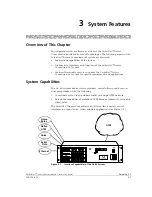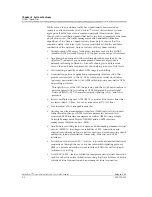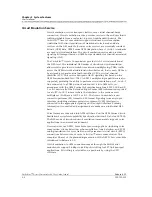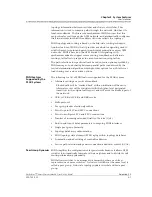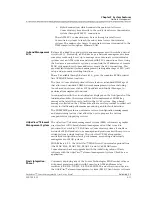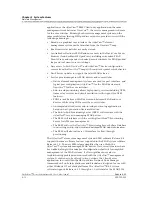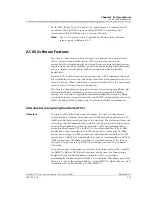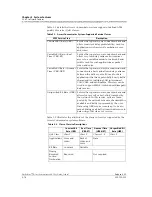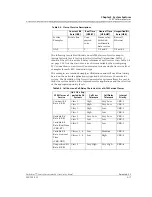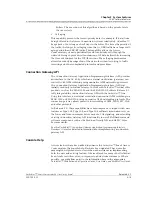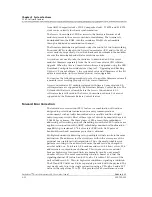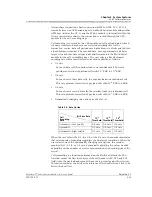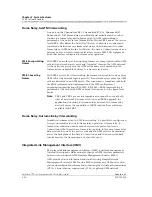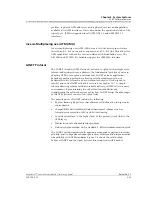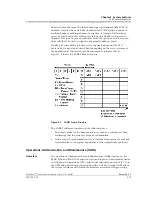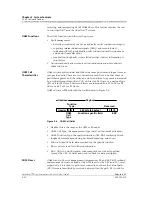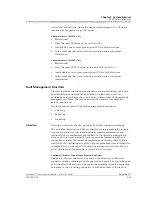
Chapter 3 System Features
AC 60 Software Features
3-14
255-700-025
PacketStar
™
Access Concentrator 60 User Guide
, Issue 1
Release 6.3.0
Operation
As the DHPVC is established, both the primary and standby circuits are
provisioned from the originating node to the terminating node, through the
ATM network. When provisioning the primary circuit, the user enters the
network parameters that are appropriate for the type of connection being
established (e.g., ingress slot, ingress port, egress slot, egress port, QoS, AAL
type, peak cell rate, VPI, VCI, and so on). When provisioning the standby
circuit, the user is only required to enter the network parameters that are
associated with the standby link (e.g., egress slot, egress port, VPI, VCI). The
remaining parameters are taken from the primary circuit. Because DHPVCs
make use of simple PVCs within the network, interoperability issues do not
exist with intervening switches.
During normal operation, the primary PVC carries all the data associated
with the DHPVC. During this time, user data is not transmitted over the
standby PVC. The DHPVC implementation makes use of ATM Forum OAM
F5 flows to automatically initiate rerouting.
When connections are provisioned, active and backup PVC routes are
defined. If a link failure is detected on the primary PVC (on either the
transmit path or the receive path), the associated network element that
detects the failure generates an OAM F5 alarm indication signal (AIS) to the
downstream node, which in turn sends the AIS to the destination edge node.
At that point the edge node converts the AIS to remote defect indication
(RDI) messages, which are transmitted to the originating node. Intermediary
nodes relay the RDI messages upstream, ultimately to the originating or
terminating nodes. Affected nodes that implement DHPVCs automatically
switch over to standby PVCs upon detecting an RDI or AIS. In addition, this
switchover will occur upon detecting a hardware failure associated with the
ports used for the circuit. In such instances, the CPU will recognize the failure
and initiate the DHPVC reroute.
Application
A pair of AC 60 systems, acting as the originating node and terminating
node, cooperatively accomplish the network-wide rerouting regardless of the
number of connections affected by the network outage. The systems can
switch the PVCs to the backup link within 1 second, avoiding service
interruptions under reasonably likely conditions of network congestion.
Figure 3-2 illustrates how the alternate rerouting is accomplished.
Содержание PacketStar AC 60
Страница 38: ...Chapter 1 Getting Started 1 14 255 700 025 PacketStar Access Concentrator 60 User Guide Issue 1 Release 6 3 0 ...
Страница 128: ...Chapter 3 System Features 3 80 255 700 025 PacketStar Access Concentrator 60 User Guide Issue 1 Release 6 3 0 ...
Страница 404: ......
Страница 406: ......
Страница 408: ......
Страница 409: ......


